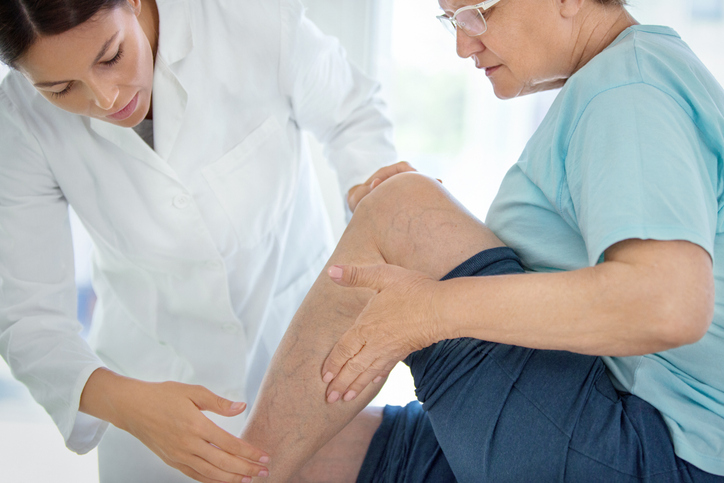Limb Preservation
Peripheral artery disease (PAD) is the leading cause of non-traumatic amputation in the United States. Poor circulation from PAD and other vascular conditions can lead to complications, including infections, non-healing ulcers, and gangrene.
Left undiagnosed and untreated, vascular disease and its complications increase the risk of leg amputation. Nationally, nearly one-third of patients do not receive vascular testing prior to amputation. Over half of those who have undergone amputation did not receive the latest recent treatment to improve limb-saving blood flow.
The cardiovascular experts at Saint Luke's Vascular Center are skilled at diagnosing and treating conditions that might normally require amputation.
Saint Luke’s Hospital Vascular Center team of vascular specialists is focused on saving limbs by providing a full range of expertise in treatments and minimally invasive procedures. This level of expertise not only promotes prompt wound healing, but prevents the need for amputation. Through leading-edge research and multidisciplinary care, our vascular experts provide treatments and strategies known to improve patient outcomes. That level of care is key to optimizing cardiovascular health and keeping the legs and feet healthy in the long term.
To schedule a consultation or ask questions, call 816-932-2585 or send an email.
Treatment
Saint Luke’s Vascular Center offers leading-edge limb preservation treatments. Our vascular experts work with a multidisciplinary team across Saint Luke's including wound care, interventional radiology, vascular surgeons, dieticians, vascular cardiologists, and endocrinologists. These experts work together to create a personalized treatment plan for each patient.
- Nutritional support: Key component of healing a limb is to provide the body with the nutrients it needs to repair the wound
- Diabetes management and cardiometabolic care: Address underlying health that may be contributing to poor circulation
- Cardiovascular care: Treatments to help to reduce the risks of heart attack and stroke associated with vascular disease
- Surgical options: Traditional open vascular reconstruction and leading-edge minimally invasive options, such as deep vein arterialization (DVA), percutaneous transluminal angioplasty (PTA), and shockwave, restore blood flow to damaged limbs.
Risk factors that contribute to the potential need of amputation
- Poorly controlled diabetes
- Malnutrition
- Smoking and tobacco use
- Peripheral artery disease
- Advanced kidney disease
- Prior toe or foot amputation
Symptoms
The following signs are serious and require further evaluation:
- Pain when walking
- Foot pain at rest or while in bed
- Sores on legs and feet that are slow or not healing, such as diabetic foot wounds
- Leg cramps during exercise
- Numbness of the feet
- Temperature changes in the feet or legs
- Leg or foot coloration changes
- Slower growth in toenails
To schedule a consultation or ask questions, call 816-932-2585 or send an email.
